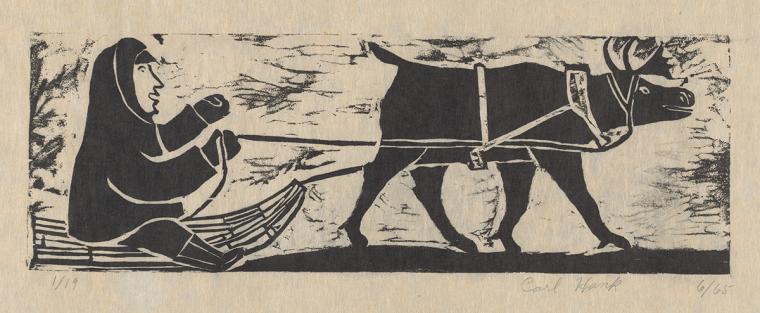One piece of paper can capture many convergent moments in time. This scene of an Alaska Native man driving his reindeer may seem simple, but it actually represents a complex history.
A U.S. ship captain first brought reindeer, a semidomesticated caribou, from Siberia to western Alaska in 1892 as an additional food and income source for Inuit and Yup’ik communities. Chukchi herders from what is now Russia and Sámi from Finland, Norway and Sweden were later brought over to teach the Alaska Native peoples how to care for and herd the animals. Sleds were fashioned specifically for teams of reindeer as they could pull much more weight than the dogs that had been used. By 1902, more than 1,200 reindeer were distributed to Alaska Native communities.
The graphic style of Alaska Native art seen here began to be captured in wood-cut prints only during the past few decades. The late Iñupiaq artist Carl Hank created this scene in 1965 by cutting the reverse image into wood, painting it with ink and then pressing the paper on the carving. Hank made this work while a participant in a U.S. Department of the Interior Indian Arts and Crafts Board program called the Designer-Craftsman Training Project, which was designed to provide employment skills to artists. During the program’s short run from 1964 to 1965, a select group of artists in Nome, Alaska, learned how to use tools to create prints, carve wood and stone, and work silver into jewelry and other art pieces.
Today, Hank is known for his exceptional baskets woven out of baleen, the fine strips of keratin in the mouths of baleen whales. This wood-cut print is one of only a few he was known to have made.

